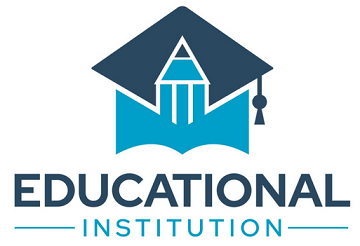In an evolving world where education does not end with graduation, opportunities for continued learning become increasingly essential. Among the most respected formats for targeted, advanced learning is the seminario. Known in many cultures and languages as a seminar, it is not just a scheduled event but an experience crafted around in-depth knowledge sharing, active dialogue, and applied understanding. Whether in academic institutions, corporate settings, or professional development programs, the seminario serves as a focused channel for critical thinking, mentorship, and community building.
Unlike lectures or mass presentations, the seminario often prioritizes intimacy, participation, and specialization. Participants are not merely passive recipients of information but are invited to engage, question, and collaborate. It becomes a space where ideas are refined, tested, and sometimes even challenged. In this kind of environment, both the instructor and the attendees have the opportunity to evolve. The instructor sharpens their material through feedback and real-time exchange, while the attendees benefit from exposure to nuanced perspectives and curated knowledge.
The modern seminario is not bound by a fixed format. It can be held in person, delivered virtually, or structured as a hybrid experience. Each model offers its own strengths, with in-person events fostering networking and interpersonal exchange, while virtual sessions allow for broader reach and more flexible participation. Regardless of delivery, the purpose remains the same: to delve into a subject with clarity, depth, and purpose.
Academic and Research-Focused Seminarios
Academic environments have long embraced the seminario as a vital component of graduate education and research training. In this context, the format often serves as a structured venue for the presentation of ongoing research, theoretical discussions, or close reading of specialized texts. For graduate students, attending or leading a seminario is frequently a rite of passage. It fosters public speaking, the articulation of complex ideas, and the ability to defend one’s stance through logic and evidence.
In research communities, seminarios become even more important. They are frequently used to disseminate early findings, solicit feedback from peers, and engage with emerging theories. Unlike conferences, which might be more formal and presentation-heavy, a seminario in this context is typically more dialogical and less scripted. This allows for genuine intellectual exchange, often yielding insights that can reshape the direction of the work.
In certain fields, regular seminarios are embedded into the rhythm of academic life. Weekly or monthly gatherings form intellectual communities that extend beyond the traditional classroom. Faculty members, doctoral candidates, and visiting scholars join together in pursuit of deep engagement with a shared discipline. The consistent nature of these sessions promotes intellectual accountability while offering a platform to refine arguments and evolve methodologies.
Corporate Training and Skill-Based Seminarios
In the professional world, the seminario format has been adapted to meet the growing demand for lifelong learning. As industries face rapid technological changes, shifting consumer behaviors, and global competition, the need for continuous upskilling becomes critical. Seminarios offer an agile and effective means of delivering focused content to specific groups within an organization.
Unlike broad training programs, a well-designed seminario hones in on a particular challenge or topic. It could center on leadership development, cybersecurity awareness, compliance updates, or creative problem-solving. The attendees are often grouped based on experience level, function, or goals, which allows the facilitator to tailor the discussion and materials effectively. This degree of customization enhances learning outcomes and makes the time spent more impactful.
Another strength of the seminario in corporate settings is its ability to create a shared language and understanding within teams. When individuals attend the same session and work through real scenarios together, it fosters a sense of cohesion and shared knowledge. This can directly influence team dynamics, project execution, and overall company culture. In organizations that prioritize innovation and agility, seminarios are used not just for knowledge transfer but as incubators of ideas.
Professionals also value the networking and cross-functional exposure that often comes with attending a seminario. The format encourages dialogue between departments and perspectives, opening new lines of communication and collaboration that may not exist in the normal workflow. Participants leave not only with new knowledge but often with new partnerships.
Cultural and Public Interest Seminarios
Beyond academia and the workplace, seminarios also hold a place in the broader cultural landscape. Community organizations, advocacy groups, public libraries, and cultural institutions regularly host seminarios designed to educate and empower the public. Topics may span art, history, environmental justice, wellness, civic engagement, or financial literacy. These seminarios are often open to all and structured to be accessible, offering opportunities for public dialogue on issues that affect society at large.
The role of a seminario in this context extends beyond individual learning. It can help create awareness, inspire collective action, and foster empathy. When individuals from diverse backgrounds come together to explore a common topic, the discussion becomes a bridge between communities. It allows people to connect on shared values, understand differing viewpoints, and take informed steps toward meaningful change.
Cultural seminarios may include guest speakers, artists, scholars, or activists who bring lived experience and expert insight to the discussion. The audience is encouraged to ask questions and contribute their thoughts, creating an environment that values inclusivity and shared authority. These events often lead to ripple effects, sparking further engagement and encouraging attendees to pursue ongoing education.
Evolving with Technology and New Learning Models
As digital transformation redefines how people access information, the seminario has adapted in thoughtful ways. Remote learning platforms, streaming technologies, and collaboration tools have expanded the reach of this format to new audiences. Geographic boundaries no longer limit who can participate, and recorded sessions allow for flexible learning that fits around busy schedules.
Online seminarios may differ in pace and structure, but they retain the essence of interactive learning. Chat functions, breakout rooms, and real-time polls replace the physical cues of face-to-face conversation but still enable engagement. In some cases, digital seminarios attract global participation, enriching the dialogue with diverse voices and perspectives that might not otherwise meet in person.
Blended seminarios, which combine in-person and virtual components, are becoming more common as organizations seek to balance convenience with connection. These formats provide the best of both worlds, offering robust content delivery alongside human interaction. With thoughtful design, even highly technical or nuanced topics can be taught effectively in this hybrid model.
Modern seminarios may also include pre-work, post-session reflection, and ongoing forums for discussion. This structure extends the learning experience beyond the scheduled session and reinforces knowledge through repetition and application. It turns the seminario into a dynamic process rather than a one-time event.
By embracing these evolutions while maintaining the core of meaningful exchange, the seminario continues to serve as one of the most valuable formats for learning, growth, and collaboration across multiple fields and communities.




